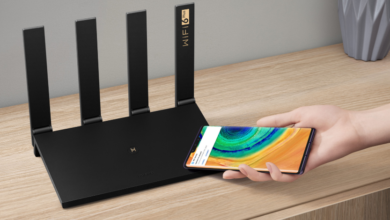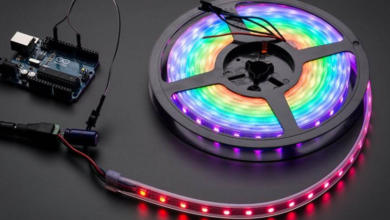What Makes a Smartphone User-Friendly?

A user-friendly smartphone is like an extension of your hand. It streamlines chores, improves communication, and never gets in the way. When the design and functionalities match how people think and behave, using the phone becomes second nature. Whether someone is tech-savvy or new to cell phones, simplicity of use has a significant impact on the experience. Everything from using applications to taking images should seem natural and seamless. When comparing gadgets, prioritizing usability shows more than simply specifications. That is why many consumers pick the “HONOR 400 price in UAE” while seeking a smooth, user-friendly design.
Why Does Smartphone Usability Matter Today?
The Role of Simplicity in Everyday Usage
People prefer devices that do not need a handbook. A straightforward interface allows users to do tasks quickly and without misunderstanding. Clear icons, a few steps to perform activities, and a logical structure all contribute to a more efficient workflow. This simplicity alleviates irritation and saves time, particularly when balancing a job, social life, and errands. Technology should work with the user, not against them. Smartphone manufacturers may improve the user experience by removing unnecessary features and concentrating on critical functions. Simplicity does not imply fewer features; rather, it indicates superior design and organization.
Accessibility Features for All Ages
Smartphones should cater to everyone, from children to the elderly. Voice commands, screen readers, and changeable font sizes make gadgets more accessible to individuals with varying requirements. Large icons and high-contrast settings help older users, while voice typing and one-tap shortcuts are useful for younger users. These technologies help individuals remain connected, informed, and self-sufficient. When a phone has such encompassing features, it broadens its appeal and provides significant value. Brands that promote accessibility build user loyalty by demonstrating that they care about all users, not just tech aficionados or younger generations.
Why UX Design Affects User Satisfaction
UX design is more than just how a phone appears; it also refers to how it feels to use. A well-designed interface enables users to do activities without thinking too much. Menus that make sense, gestures that seem natural, and feedback that verifies your actions all help to increase pleasure. A frustrating UX causes errors and stress. In contrast, excellent user experience fosters trust. When consumers feel in control, they are more likely to appreciate the item and remain loyal to the company. In competitive marketplaces, good UX design is often the distinguishing element between two otherwise comparable phones.
What Are the Must-Have User-Friendly Features?
Intuitive Interface and Navigation Tools
An easy design allows consumers to discover what they need without searching or guessing. Swiping, tapping, and motions should be intuitive and consistent across the system. Quick settings, app directories, and search tools save time while improving the user experience. A clever layout leads to fewer errors and quicker actions. Navigation features like gesture support and customizable buttons allow users to personalize the phone to their preferences. Smooth transitions and responsive animations serve to lead the user gently. When a phone gets these fundamentals right, it becomes a powerful instrument that anybody can pick up and use without hesitation.
Battery Life That Matches Your Lifestyle
Battery life is a major factor in how well a user-friendly phone fits into your daily schedule. Your phone shouldn’t need frequent recharging whether you’re working long hours, streaming video, or on the move. Intelligent battery management, power-saving modes, and effective CPUs all contribute to longer lifespans without sacrificing functionality. Consumers don’t want to worry about low battery anxiety or bring chargers around all the time. Phones that fit your lifestyle and last all day or longer relieve that tension. Battery optimization is much more than simply a specification; it is an essential component of usability that has a direct impact on user pleasure.
Voice Assistants and AI Helpfulness
Voice assistants eliminate the need to type or touch phones, making them more useful. Users may use basic voice commands to send messages, create reminders, and receive directions. By learning behaviors and making recommendations, AI goes one step further. For example, it may forecast your next app or change the brightness depending on the time of day. These gadgets save time and make daily activities simpler. Voice typing, contextual help, and smart responses all increase usability without requiring additional user effort. The smartphone becomes a genuine assistant that recognizes your needs and offers proactive assistance when AI seems natural and personal.
How Hardware Impacts Ease of Use
Screen Size and One-Hand Use
A huge screen provides excellent graphics, but it must be simple to operate with one hand. Many people multitask and need to handle their phone while holding something else. One-handed modes, edge shortcuts, and accessible UI components are all smart design decisions that address this issue. The optimal screen creates a mix between engrossing visuals and usable controls. Bezels, aspect ratios, and screen curvature all influence this equilibrium. When consumers can browse easily without straining their fingers or dropping the gadget, they feel more relaxed. It’s more than simply size; it’s also about smart proportions and clever software support.
Button Placement and Tactile Feedback
Buttons should be simple to find and push without looking. Power and volume controls must be located where fingers naturally rest. Good button placement prevents inadvertent presses and speeds up routine operations like unlocking or capturing screenshots. Tactile feedback provides assurance—users may know the button worked without examining the screen. Even software-based buttons need visual or tactile feedback. These minor details contribute to a more seamless overall experience. Poorly positioned or difficult-to-press buttons may annoy users, particularly during calls or during multitasking. When hardware compliments how users handle and use their phones, they feel more comfortable and confident.

Build Quality and Grip Comfort
The feel of a smartphone is just as important as its functions. A well-made phone feels sturdy, not slick or cheap. Matte surfaces and soft edges help to increase grip and decrease drops. Slim profiles make the gadget more portable, but it must still be durable. The weight distribution also influences how balanced it feels in hand. Rounded edges, textured backs, and even case compatibility are all factors that contribute to comfort. Users are continually holding their phones. Thus, comfort is critical to long-term pleasure. Good build quality indicates durability and attention in design, making the phone not only simple to use but also long-lasting.
Conclusion
A really user-friendly smartphone combines intelligent design, thoughtful functionality, and dependable hardware. It enables people to attain their objectives with less work and more fun. Every aspect counts, from easy-to-use interfaces to extended battery life and ergonomic design. Usability is more than simply a technical phrase; it refers to what makes using a phone fun on a daily basis. Whether shopping based on specs or price—like searching for ” HONOR 400 price in uae“—it’s important to think about how the phone fits into your life. The best smartphones don’t just perform well—they feel right from the first touch. That’s what defines user-friendliness in today’s market.




